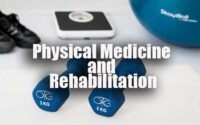Neurology Questions and Answers
Neurology Questions and Answers paper for the written examination is given below. Candidates who are looking for Neurology exam Questions and Answers paper can find in this section. The applied candidates who are getting prepared for the Neurology can view this page for the Neurology Last Ten Years Questions and Answers Papers.

Download the Neurology Questions and Answers & Solutions & make it as a reference for your exam preparation. Take advantage of these Neurology Questions and Answers Papers in a proper manner to get qualifying Marks. Last 5 years Neurology Questions and Answers Papers provided here. Candidates who are applied for the above exam can check and download the Neurology Questions and Answers Papers from here.
Questions and Answers on Neurology
1. The mechanism of motor dysfunction produced by Botulinum toxin is
(1) Failed ACh release from the presynaptic nerve terminal
(2) Anterior horn cell destruction
(3) Inhibition of intracellular protein production
(4) Muscle inflammation
2. What medical condition is associated with and can directly contribute to idiopathic intracranial hypertension (IIH)?
(1) Obesity
(2) Hyperthyroidism
(3) Migraine headache disorder
(4) Diet controlled non-insulin dependent diabetes mellitus
3. 22-year-old woman presents to your clinic. She describes 2 months of decreased vision in her left eye. Her vision declined over several days and by one week she had lost all vision out of the Ieft eye. She has mild associated periorbital pain. She has had no recovery of her vision since this time. Physical exam of the left eye shows light perception only with a relative afferent pupillary defect. Which of the following characteristics of this case make it atypical for optic neuritis?
(1) Age
(2) Lack of spontaneous recovery
(3) Gender
(4) Periorbital pain
4. What additional deficit would be expected in patients with a lesion that involves nucleus of the right cranial nerve 6?
(1) A right facial palsy
(2) A left gaze paralysis
(3) A right gaze preference
(4) An isolated abduction deficit in the right eye
5. Of the muscles listed below, which one remains uninvolved in a median Nerve lesion proximal to the elbow?
(1) Flexor carpi ulnaris
(2) Pronator teres
(3) Flexor carpi radialis
(4) Flexor pollicis longus
6. A 60 year-old female with blepharospasm returns to your cline 1.5 months after your injection with botulinum toxin type A. She reports the squeezing of her eyes shut is much | improved but she continues to have problems with her eyes not wanting, to Open. What is the most likely cause of her sub optimal response to her botulinum toxin injection?
(1) Concomitant dry eye
(2) Apraxia of eyelid opening
(3) Inadequate dose of botulinum toxin
(4) Endogenous antibodies to botulinum toxin type A
7. Natalizamab turgets which of the following?
(1) Sphingosine-I-phosphite receptor
(2) CD20+ cells
(3) Alpha-d-integrin
(4) Membrane attack complex (complement)
8. What is the mechanism of action of tiagabine?
(1) Sodium channel blocker
(2) Direct interaction with the GABA- A receptor
(3) Inhibition of GABA reuptake
(4) Calcium channel blocker
9. Which of the following has NOT been associated with increased disability in patients with multiple sclerosis?
(1) Hypertension
(2) Hypovitaminosis D
(3) Cannabis Indica use
(4) Obesity
10. What is the mechanism of action of vigabatrin?
(1) Inhibition of GABA transaminase
(2) Sodium channel blocker
(3) Calcium channel blocker
(4) Blockabe of NMDA receptors
11. Which of the following anti-epileptic medications acts by promoting slow inactivation of voltage-gated sodium channels?
(1) Carbamazepine
(2) Lacosamide
(3) Lamotrigine
(4) Sodium valproate
12. Which of the following neurological complications has been associated with Zika virus infection?
(1) Myasthenia gravis
(2) Guillain-Barre syndrome
(3) Acute myositis
(4) Optic neuritis
13. Which of the following language deficits classically follows lesions of the dominant inferior parietal lobule involving the angular gyrus?
(1) Broca’s aphasia
(2) Alexia with agraphia
(3) Alexia without agraphia
(4) Pure word deafness
14. Which of the following carries a black box warning for increased risk of suicidal ideation?
(1) Tetrabenazine
(2) Asprin
(3) Naprosyn
(4) Pantoprazole
15. Which of the following is true about the use of dimethyl fumarate in the treatment of multiple sclerosis?
(1) Flushing — and gastrointestinal problems are its most common side effects
(2) It is the only oral medication approved for treatment of primary progressive multiple selerosis
(3) It was the first oral medication approved for the treatment of multiple sclerosis
(4) It is a pill taken once daily
16. All of the following are common side effects of stimulant medications, EXCEPT
(1) appetite suppression
(2) hypertension
(3) loss of vision
(4) delayed onset of sleep
17. Which of the following statement defines prosody?
(1) A combination of individual sound units
(2) The rhythum and intonation of speech
(3) The smallest unit of written language that conveys unique information
(4) The meaning of language
18. All of the following have been demonstrated to be effective treatment for obsessive compulsive disorder (OCD), EXCEPT
(1) Clomipramine
(2) cognitive behavioral therapy
(3) deep brain stimulation
(4) propranolol
19. Which of the following drugs is a mixed agonist-antagonist commonly used in the treatment of chronic pain and opiate addiction?
(1) Tramadol
(2) Buprenorphine
(3) Morphine
(4) Pregabalin
20. Which of the following are true of action for mannitol?
(1) Mannitol acts to increase the osmotic gradient across the blood brain barrier (BBB)
(2) Mannitol transiently increases intravascular volume
(3) Mannitol decreases blood viscosity
(4) All of the above
| Practice Set | MCQs |
| Quiz | Questions and Answers |
21. Carbidopa is administered in combination with levodopa in patients with Parkinson’s disease for which of the following reasons?
(1) It is a potent inhibitor of aromatic amino acid decarboxylase
(2) It is a potent inhibitor of dopamine B hydroxylase
(3) It promotes central nervous system tyrosine hydroxylase activity
(4) It promotes dopamine-B hydroxylase activity
22. All of the following are listed in the diagnostic criteria for behavioral variant of frontotemporal dementia (bvFTD), except
(1) behavioral disinhibition
(2) perseverative or compulsive behaviuors
(3) frontal atrophy on brain imaging
(4) score of < 25 on the mini-mental state examination
23. A seven-year-old girl is referred for brief spells of eye fluttering and inattention, Routine EEG shows 3 Hz spike and wave provoked by hyperventilation, which coincided with a typical spell. The first line anti-epileptic medication for this condition acts on which molecular target?
(1) Voltage-gated sodium channel
(2) GABA-A Receptor
(3) SV2A Protein
(4) T-type Calcium Channel
24. In which of the vitamin deficiency spinal MRI = shows T2 signal abnormalities in the lateral or posterior columns?
(1) Vitamin A deficiency
(2) Vitamin B1 deficiency
(3) Vitamin B12 deficiency
(4) Vitamin B9 deficiency
25. Which interventions have been shown to improve the behavioral symptoms of autistic spectrum disorders?
(1) Applied behavior analysis
(2) Habit reversal therapy
(3) Second generation antipsychotic medications
(4) (1) and (3)
26. Which of the following is most frequent type of migraine?
(1) Migraine without aura
(2) Migraine with aura
(3) Complicated migraine
(4) None of the above
27. Which of following are risk factors for epilepsy?
(1) Alzheimer’s disease
(2) Major depression
(3) Chronic alcohol intake
(4) All of the above
28. Causes of seizure related deaths include
(1) deaths from status epilepticus
(2) accidents due to seizures
(3) SUDEP
(4) All of the above
29. Which of the following drugs acts by irreversibly inactivating its target?
(1) Levetiracetam
(2) Valproic acid
(3) Vigabatrin
(4) Carbamazepine
30. Hyperthymia, considered a state on the mania spectrum, is associated with all of the following, EXCEPT
(1) elevated activity
(2) excessive optimism
(3) psychosis
(4) hypertalkative
31. Which of the following is true regarding speech and language?
(1) Language is the use of spoken, written, and/or other symbols to express, represent, of receive communication
(2) Language is the mechanical production of verbal output
(3) Speech refers to the meaning of language
(4) Disorders of speech and language are rarely comorbid
32. Which of the following genetic profiles connotes the greatest risk for the : development of early onset Alzheimer disease?
(1) Apolipoprotein €4 (APOEE£4) homozygous carrier
(2) Triggering receptor expressed on myeloid cells 2 (TREM2) mutation
(3) Presenilin 1 mutation
(4) Microtubule-associated protein tau (MAPT) mutation
33. Which of the following interferon, used as a disease-modifying treatment in multiple sclerosis, has the least frequent dosing schedule?
(1) Low-dose interferon beta-l a
(2) High-dose interferon beta-l a
(3) Interferon beta-l b
(4) Pegylated interferon
34. Which of the following is an effective reversal agent for rivaroxaban?
(1) Protamine sulfate
(2) Vitamin K
(3) Andexanet alfa
(4) Transexamic acid
35. Fingolimod targets which of the following?
(1) CD20 B-cells
(2) CD4 and CD8 T-cells
(3) Membrane attack complex (complement)
(4) Sphingosine-1-phosphate receptor
36. All of the following modifiable risk factors impact one’s risk for Alzheimer disease (AD), except
(1) Cigarette smoking
(2) Diabetes
(3) Physical inactivity
(4) Traumatic brain injury
37. Baclofen is helpful in the treatment of spasticity via which of the following mechanisms of action?
(1) Competitive agonist at the benzodiazepine site
(2) Glutamic acid decarboxylase inhibitor
(3) NMDA inhibitor
(4) Competitive agonist at GABA-B receptors
38. The anticoagulant effect of warfarin is mediated via which of the following mechanisms of action?
(1) Vitamin K epoxide reductase inhibition
(2) Cyclooxygenase inhibition
(3) Direct factor 10 a inhibition
(4) Direct thrombin inhibition
39. Which of the following is true regarding relapses in multiple sclerosis?
(1) They consist of new worsening symptoms lasting more than 10 hours.
(2) MRI evidence of relapse is contrast enhancing lesion
(3) They often occur in the presence of fever or infection
(4) Because by definition they are transient, they do not result in progression of disability
40. Which of the following medications is a non-competitive antagonist at AMP A receptors?
(1) Clobazam
(2) Perampanel
(3) Pregabalin
(4) Levetiracetam
41. Which of the statement is true regarding Alcoholic neuropathy?
(1) It is a mixed sensory & motor disorder of large & small diameter nerve fibers
(2) It is a sensory neuropathy
(3) Itis a motor neuropathy
(4) None of the above
42. Which of the following medications carries an elevated risk of widening the QRS complex and prolonging the QTc interval?
(1) Carbamazepine
(2) Levetiracetam
(3) Pregabalin
(4) Topiramate
43. A 50-year-old woman was diagnosed with clinically isolated syndrome following an episode of optic neuritis years ago. Which of the following factors increases her risk of later developing MS?
(1) Absence of a gadolinium-enhancing lesions on brain MRI
(2) Absence of unique oligoclonal bands on CSF evaluation
(3) Female gender
(4) Higher number of T2 lesions on brain MRI
44. Which of the following is true about multiple sclerosis?
(1) Men and women are equally affected.
(2) In familial cases, multiple sclerosis follows a non-Mendelian pattern of inheritance.
(3) Several genetic loci have been associated with a higher risk for developing multiple sclerosis, most of these with roles in the immune system.
(4) Several antigens that trigger inflammation in multiple sclerosis have been identified.
45. Which of the following are epilepsy mimics?
(1) Breath holding spells
(2) Limb shaking TIA
(3) Stereotypies
(4) All of the above



